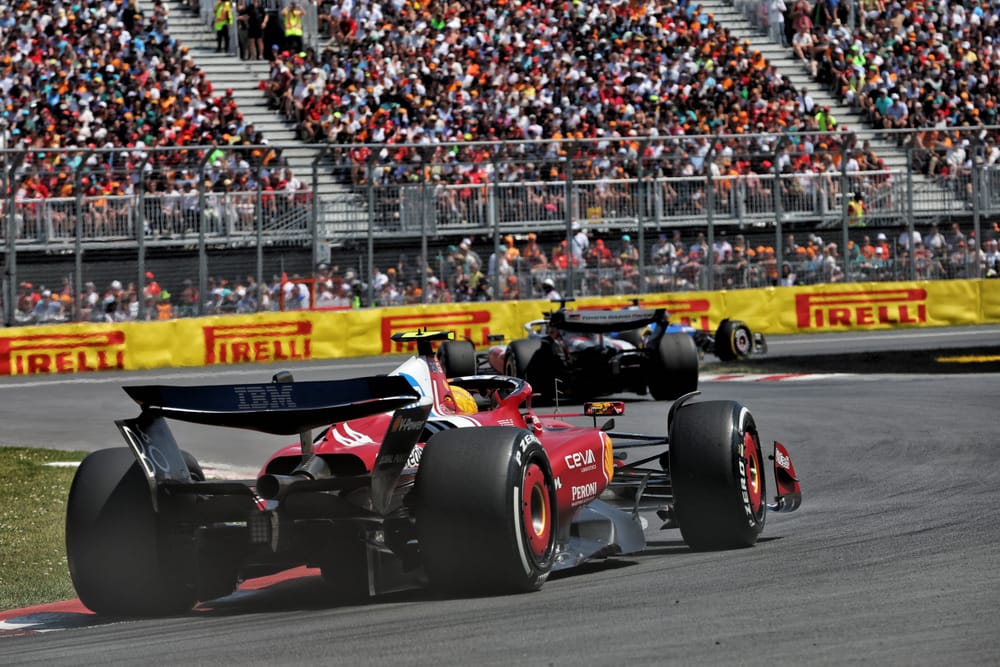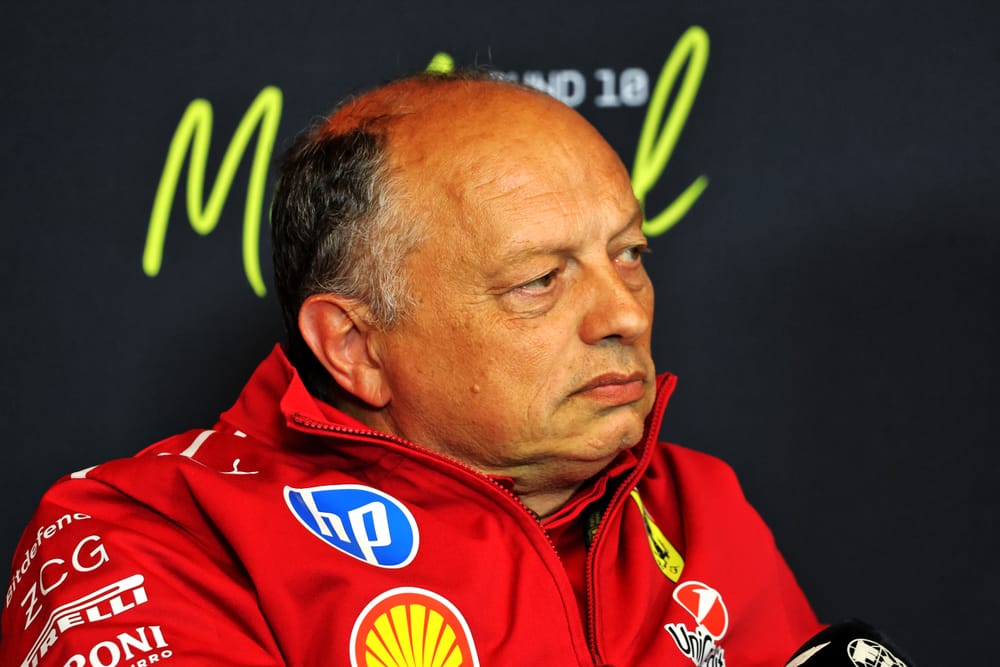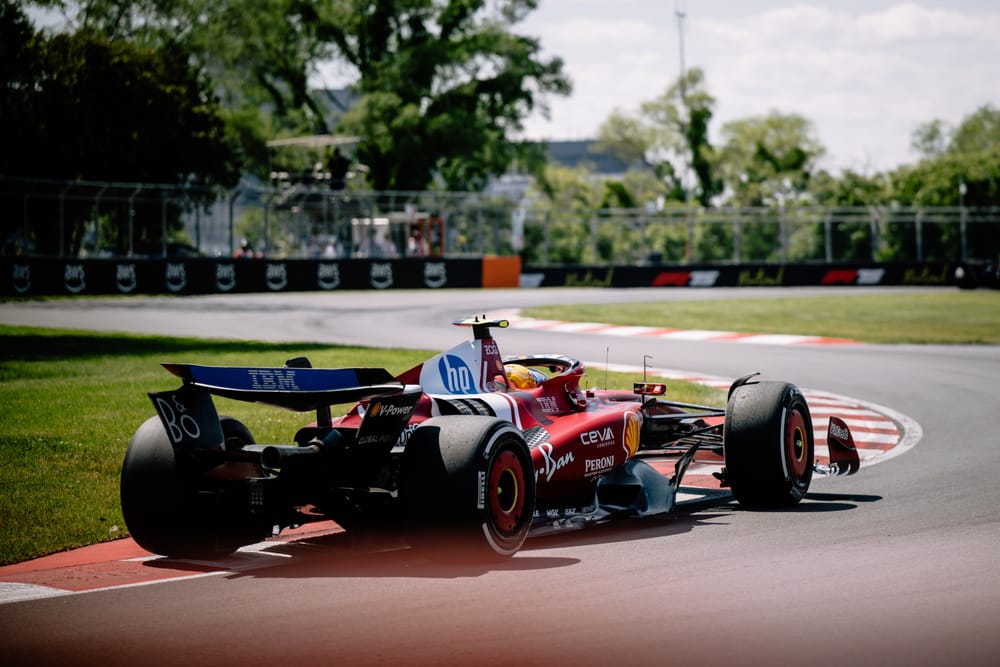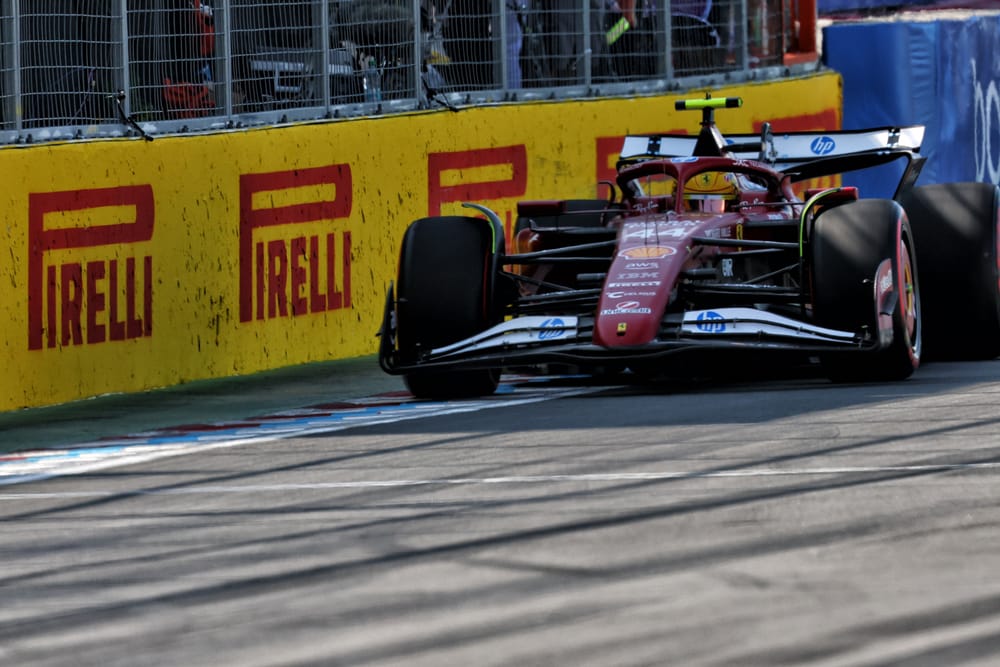Ferrari has hinted that a much-awaited upgrade could appear at Formula 1's Austrian Grand Prix, but it will not cure the key issue where team boss Fred Vasseur says it "failed massively" again in Canada last weekend.
Both Lewis Hamilton and Charles Leclerc have talked openly about the need for the team to deliver developments to its SF-25 car - as they feel it has reached the limit of its potential.
There is an accepted view that Ferrari's 2025 car has a key weakness in not being able to run as close to the ground as the team would like in races because it risks wearing the plank down. This problem is especially amplified in tracks with high-speed corners, where the extra loads push it even closer to the track.
One upgrade that the team is believed to be working on is a revamped rear suspension, which could help the car better cope with the loads put through it in fast corners – and therefore allow it to run in a better ride-height window.
Ferrari boss Fred Vasseur has been reticent to offer any details about what the specific car weakness is though, nor what changes are coming beyond that something is arriving soon.
However, he has played down talk of any upgrade being critical to helping Charles Leclerc and Lewis Hamilton deliver better results. That is because he is adamant Ferrari's main weakness right now is in not extracting everything it has from its car - which is something that will not be solved by developments.
Speaking about the update plan, Vasseur said: “We will have an upgrade soon, before the UK. And perhaps another one a bit later.
“But honestly today, I think there is much more into the execution and what you are getting from the car than into the potential of the car itself.
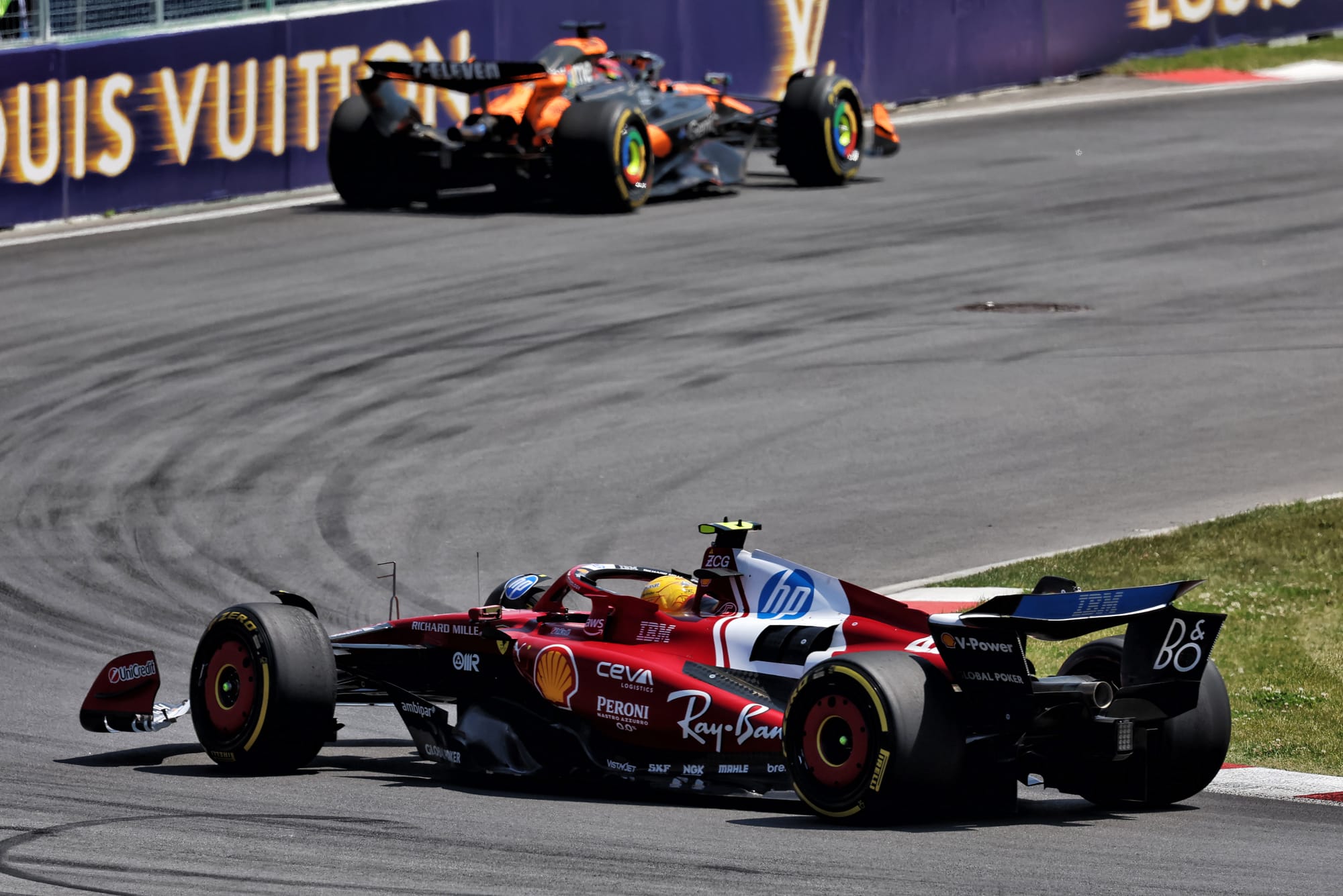
“Now we are at the end of the life of these regulations, and we all know that when we are bringing something on track we are more speaking about hundredths than tenths. And if you don't do a good usage of the car, because the set-up is a bit different, you can lose tenths.
“A couple of times, on our side at least, and we are not the only one, when we brought upgrades in the past, we needed also one or two races to adapt the car, the set-up to the new version.
“Honestly I think that, and I want to put the focus on the team, there is much more [to come from] the execution than the pure potential of the car. But we will bring something.”
Too many mistakes
🚩 Red flag!
— The Race (@wearetherace) June 13, 2025
Leclerc has hit the barrier! pic.twitter.com/0V13xRDiu1
Vasseur’s idea that Ferrari is not optimising its weekends was proven in Canada when it appeared to have a car capable of fighting for the podium but fell short.
Some of this was in its own hands, like Leclerc putting himself out for the day on Friday with a crash in first practice, or it perhaps not being bold enough to try the one-stop that Leclerc reckoned was viable on Sunday.
But some of it was outside of its control, like Leclerc hitting Isack Hadjar’s dirty air in Q3 to wreck his final qualifying lap, or Hamilton striking a groundhog early in the race that damaged his floor and cost him 20 points of downforce.
As Vasseur reflected, throwing away performance through bad execution is worth far more than any benefit car improvements can bring.
“I think we made too many mistakes collectively from the beginning with the crash in FP1, with the mistake in qualifying, with the marmot [groundhog] in the race,” he said.
“At the end, the fight is so tight. I'm not speaking about lap time or race time. I'm speaking about that you can change the position for almost nothing from one weekend to another.
“It's a good lesson also from Mercedes. They were nowhere the last three weekends, and they were able to have the two cars on the podium this weekend. I'm not sure that they changed completely the car.”
Drivers want more
What Ferrari appears to be battling though is a car that makes it tricky to deliver the kind of solid weekend progress that Vasseur so wants to see.
Hamilton offered some fascinating comments after qualifying fifth in Montreal, his best grid position since Shanghai three months earlier, about how previous weekends had often resulted in stumbles along the way as the chase for performance triggered some problems.
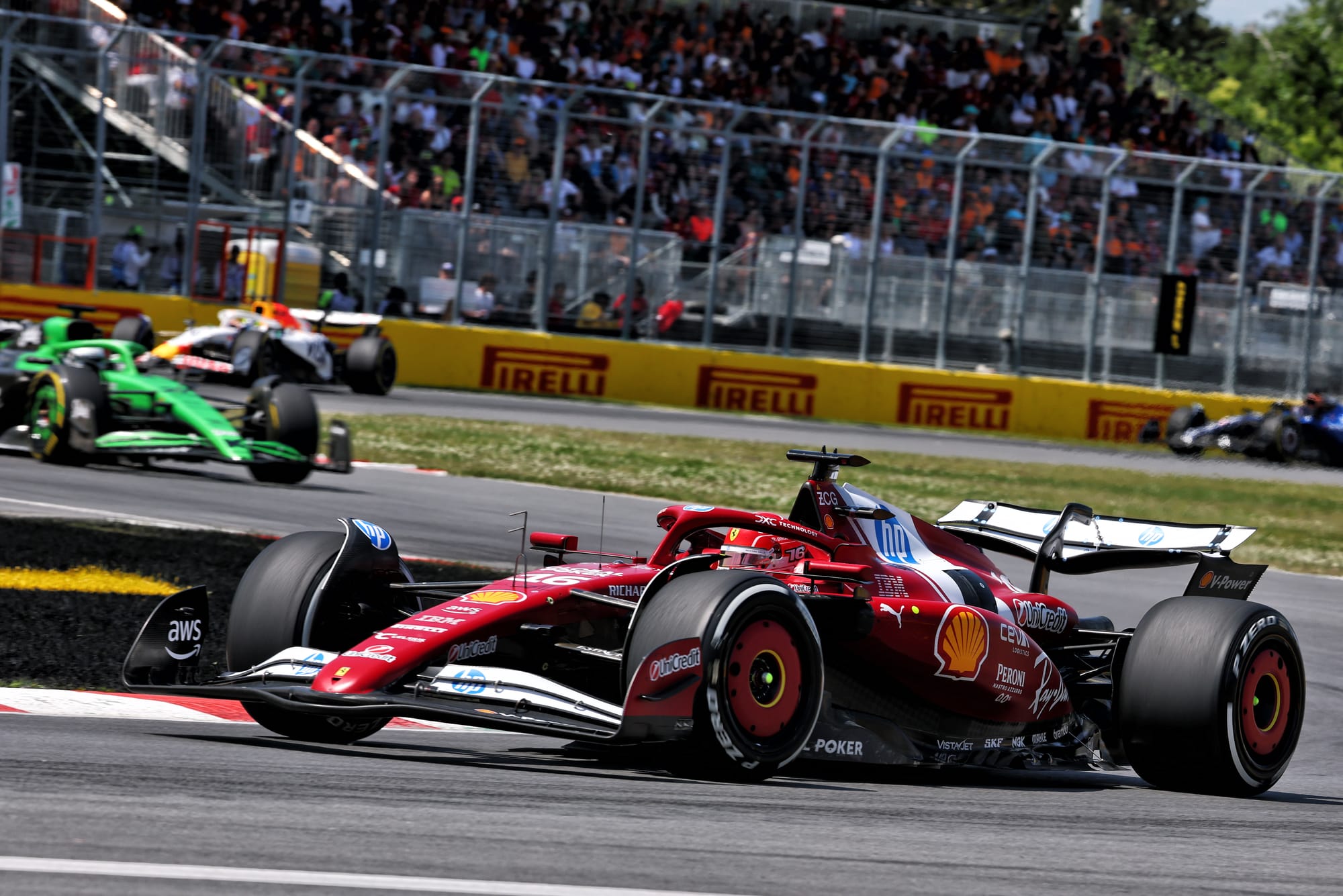
“More often than not we go through FP1 and then at previous races, FP2 has not been so great because there's been something wrong with the car - like the floor's not working or the rear wing's stopped working,” he said.
“There's always been something that meant we were down on downforce or something. So then you have a bad FP2 and you're kind of recovering in FP3.”
These comments point to some aero sensitivities, perhaps as the team chases more downforce lower to the ground.
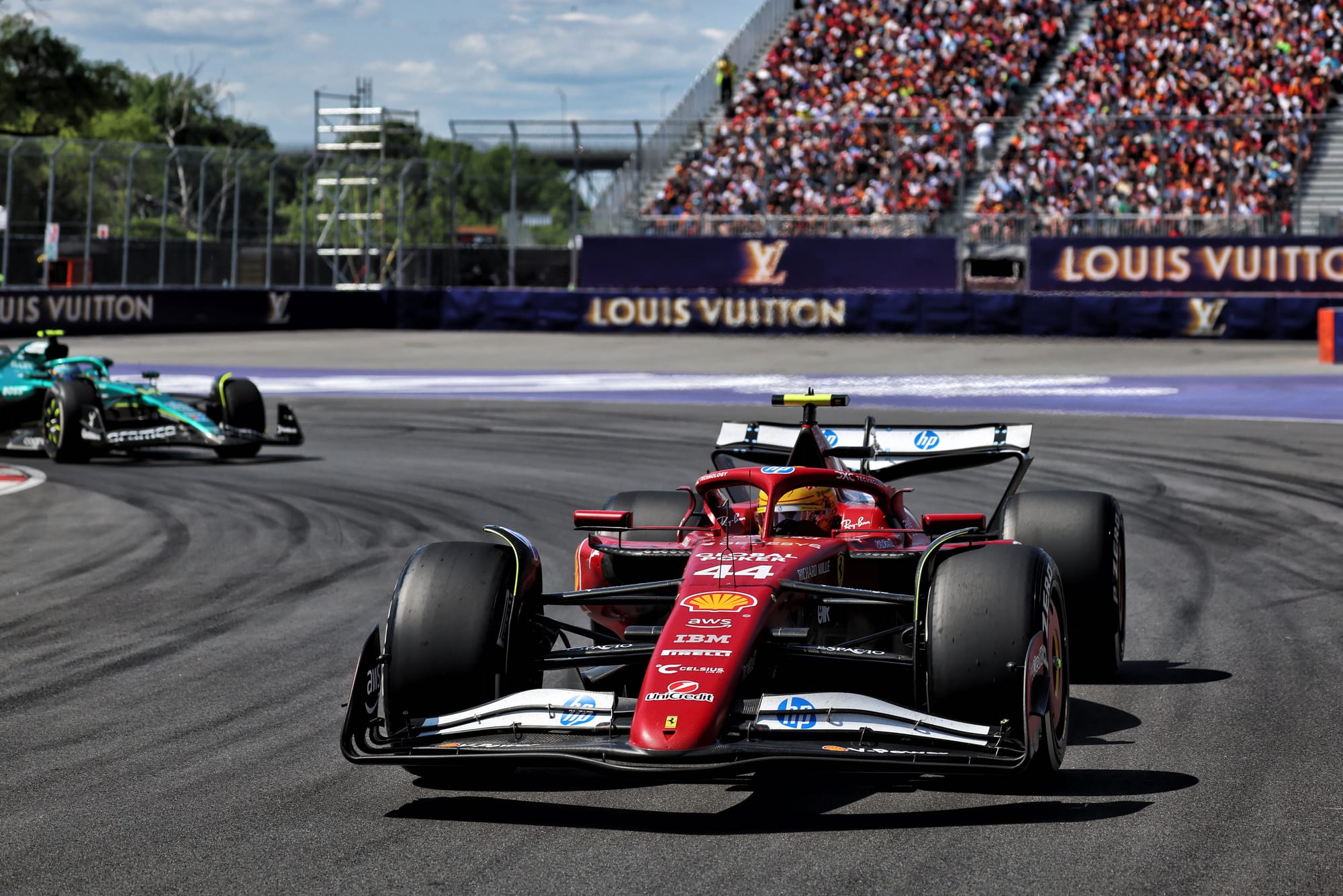
Hamilton also reckoned that Canada had exposed some fundamental car characteristics that he is especially struggling with.
“I think this track really highlighted the weaknesses of the car. I never had a car understeer so much at the low speed here. It just doesn't want to turn through Turn 2 and Turn 10.”
A war on two fronts
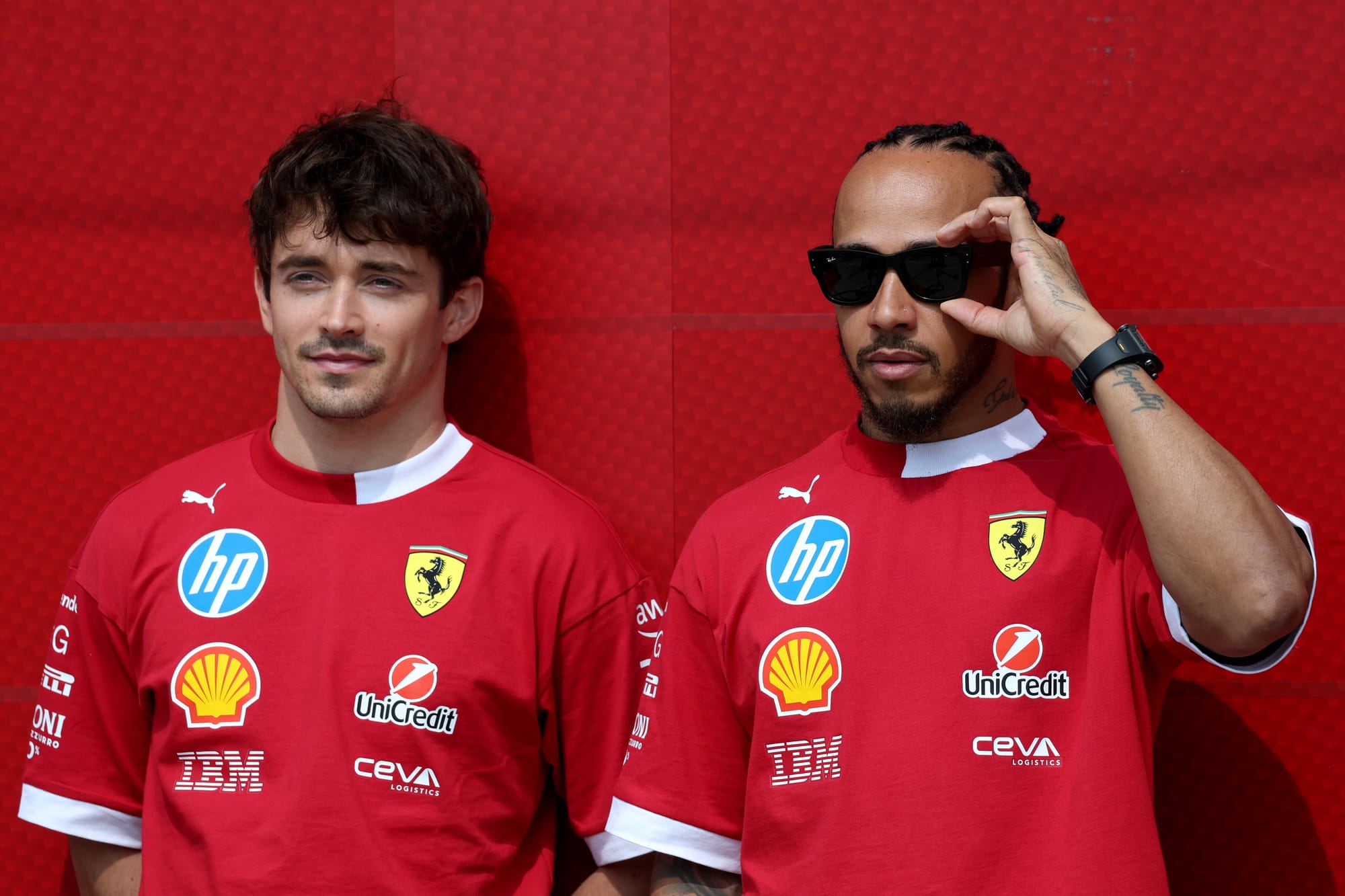
While Vasseur may be playing down the significance of upgrades coming, it is clear that any car improvements will help put Hamilton and Leclerc in a happier place – which could bring benefits in unlocking the perfect weekend it is chasing.
For it would be wrong to suggest that Ferrari has to pick where its focus on progress must come from, because having a better car and improving weekend execution are not mutually exclusive.
As Hamilton has suggested, put the car closer to the front and maybe that delivers the spark of the trackside team being able to do a better job because it is not chasing the limit so much with things.
“For me, I know we're not fighting for a win this year, I know we're not in the championship, which is not a great feeling,” he said. “We don't have the performance currently. Hopefully with an upgrade, maybe at some stage, we'll be a bit sharper.”
Ferrari is certainly not sitting back – and Hamilton knows that things have to be done differently in the future if it is to make progress.
“All you guys don't see is what's happening in the background, and there's a lot going on,” he said. “There's a lot that needs improving. A lot of things need to be changed."
Getting on the front foot
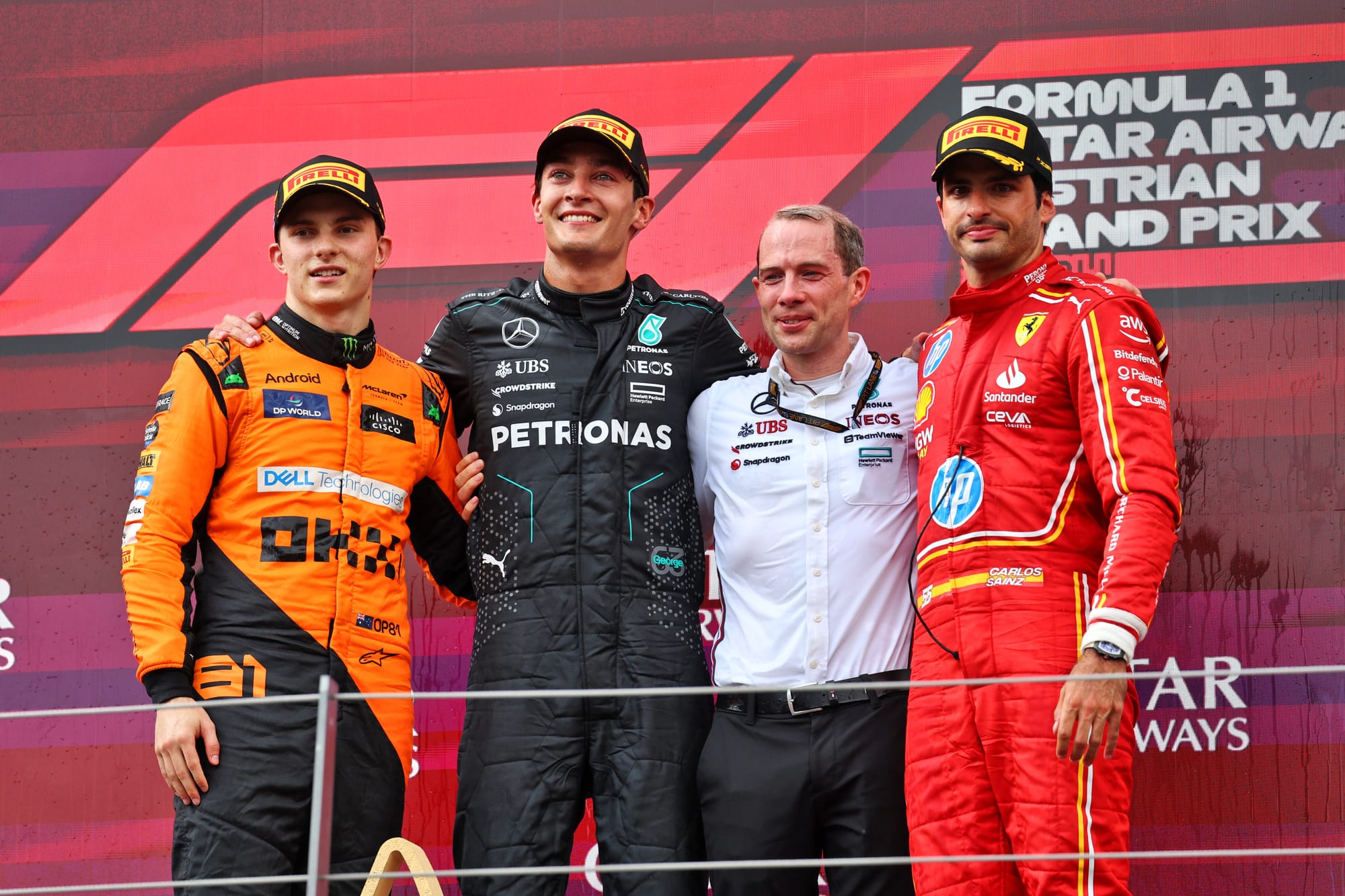
On paper the next race in Austria should not be too bad for the team, as Ferrari has proved competitive across the type of slow and medium speed corner ranges that are common at the Red Bull Ring.
But Vasseur is still adamant that Ferrari’s form lives and dies on its nailing the individual weekends – something it has not done often enough this season.
“Even before the weekend, you have to put everything together in the right place if you want to achieve a good result,” he said.
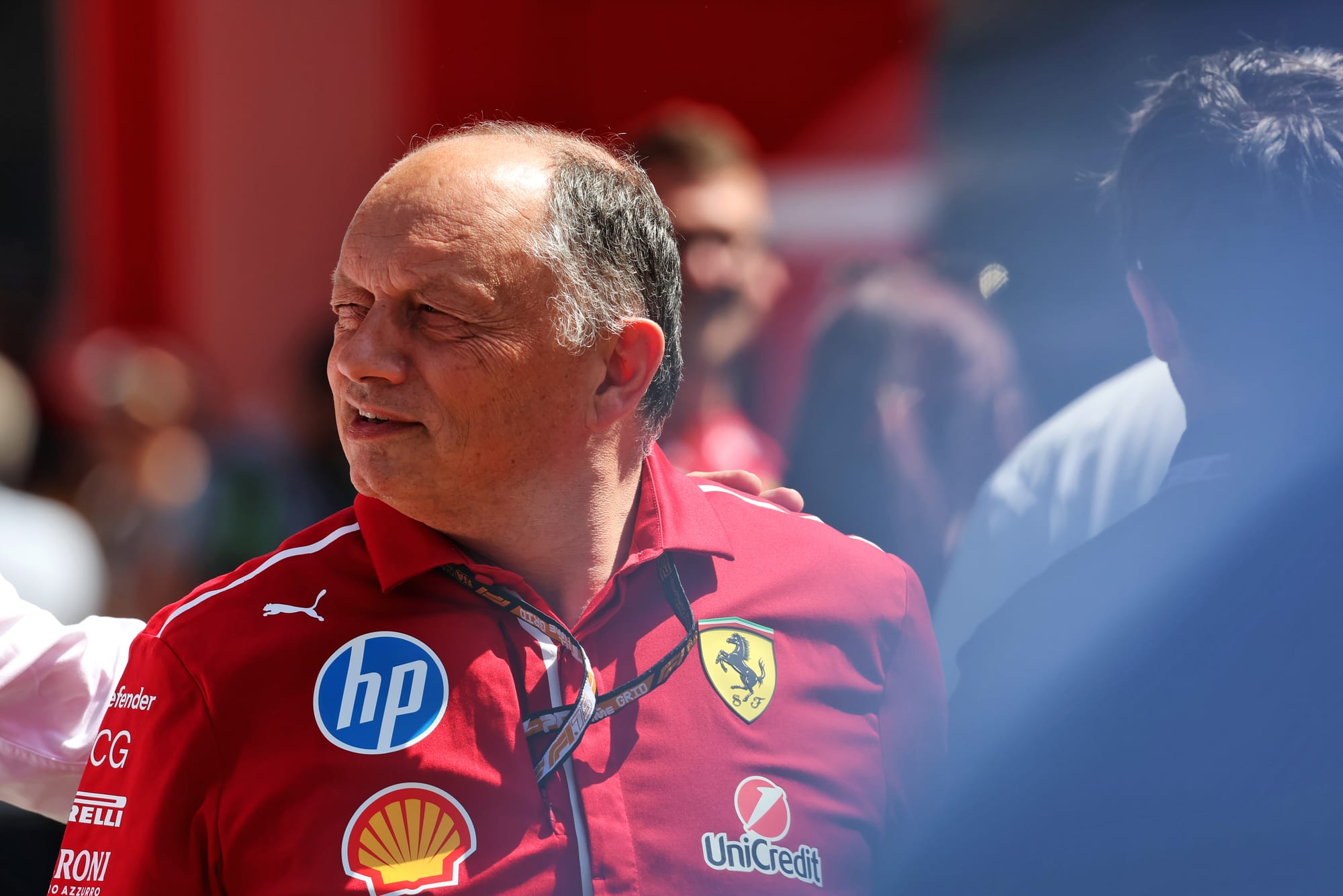
“In the tyre usage and the tyre performance, or what performance you get from the tyres, I think there is much more than between the cars. It doesn't matter the car, if the team is doing a very good job on the tyres, they will be in front.
“It's true this weekend, it was true in Monaco, it was true in Imola. It is like it is and it will be like this until the end of the season. It's the same for everybody. We have to do a better job.”
He added: “If we want to achieve, if we want to start from the first rows and to have a clean weekend as Monaco, we need to do a very smooth weekend in terms of execution. And it's where we failed massively in Canada.”


